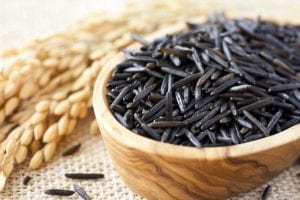In my last blog What if Leadership Exists in Abundance, I invited people to imagine an abundance instead of scarcity of leadership. If we believed leadership could occur throughout our organizations and communities, would we have higher expectations of our leaders? If there were plenty of good leaders to choose from, would we stop following leaders if they didn’t live up to the expectations of serving the organization and communities above their own interest?
This caused me to wonder how we can tap the leadership in people who aren’t currently demonstrating leadership. Are there natural ways leadership can be developed outside of classrooms and training sessions?
What can wild rice teach us about leadership?
Wild rice is a nutrient rich food that is grown in Minnesota in the United States. The Ojibwa tribe calls wild rice Mahnomen and consider it to be a sacred component of their culture. It grows along lakes and streams in the cold climate we have here. I think wild rice can teach us something about how to recognize and nourish leadership.
Wild rice grows in the wild. It is something that survives the harsh climate of Minnesota and grows strong with rich nutrient content. Mahnomen is deeply entwined with the native community that come together to harvest the rice. They canoe along the rice beds and one person bends the rice over the boat and gently gathers the seeds while the other person paddles the boat. The act of harvesting wild rice is a community event because the food is a staple nutrient of the tribe. It is said that the fortunes of the community rise and fall on the quality of the harvest. A good harvest strengthens the community and without it there is no community.
Wild rice and the community driven harvesting process nourish the body, spirit, and culture.
Provocative leadership questions derived from the role wild rice plays within a tribe
The story of wild rice invites us to ask these questions about leadership:
- What if we had this expectation of our leaders? That their legacy would not be the trading price of their stock, but whether their leadership nourished the body, spirit, and culture of our communities, organizations, nation, and world?
- What if developing leaders was a community and organization wide activity?
- What if leadership was not seen as something we can only cultivate in a classroom but is grown in natural environments, like teams, neighborhoods, schools, and workplaces?
- What if organizations and communities respected and protected the natural environments that nurture the development of leadership?
- What if we saw leadership as a gift and a staple that is abundant and if we recognized it in people, we would have healthier and more resilient organizations, communities, and countries?
Wild rice and its role within a tribe contains these components and implications. It strengthens the community as it nourishes it. It is grown in the wild and doesn’t thrive in cultivated places. This is the essence of the lesson that wild rice can teach us about leadership development. Our everyday workplaces can be a rich source for developing and enhancing leadership in our organizations. To accomplish this, we would need to expand the expectations we have of team leaders. Instead of focusing solely on productivity, team leaders would also be measured on how distributed and strong the leadership capacity was for each team member.
Dr. Kathleen E. Allen is the author of Leading from the Roots: Nature Inspired Leadership Lessons for Today’s World (2019) and President of Allen and Associates, a consulting firm that specializes in leadership, innovation, and organizational change. She writes a blog on leadership and organizations that describes a new paradigm of leadership that is based in lessons from nature and living systems at www.kathleenallen.net






